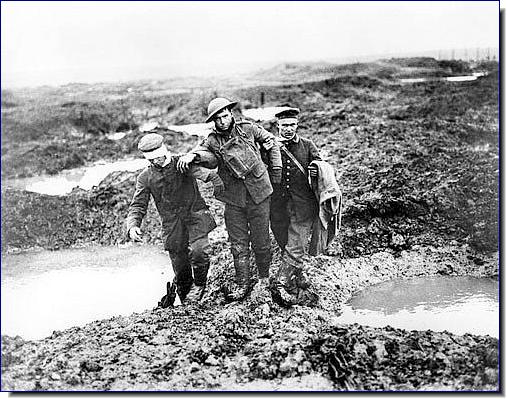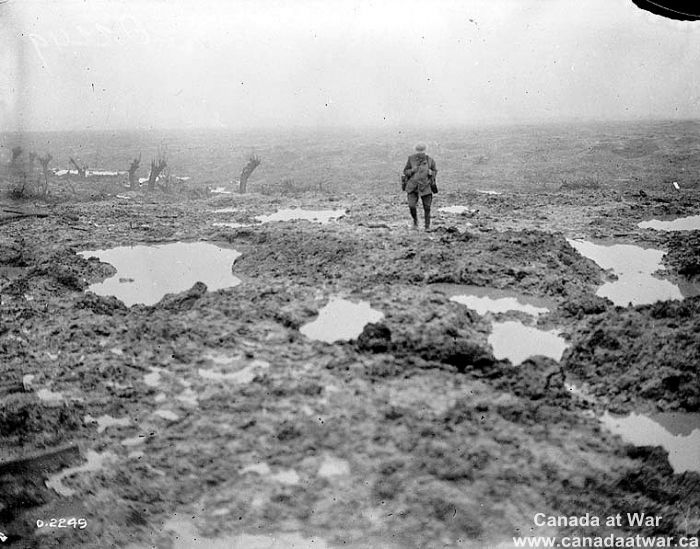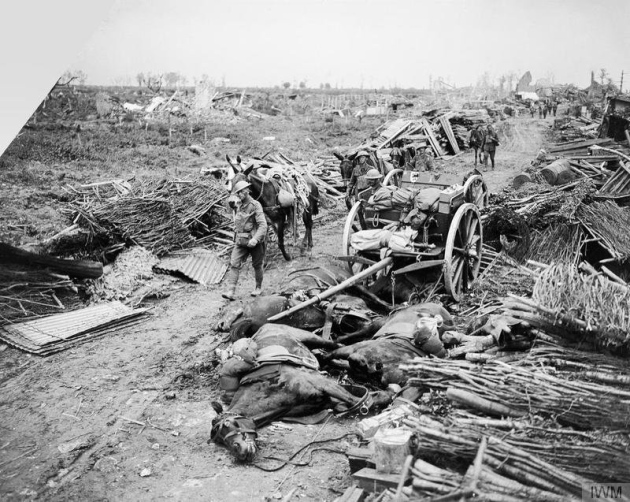Senseless Slaughter on Both Sides.
An Instance of Great Compassion: ‘The Wounded Highlander Survived.’
Special to The Great War Project.
(late September) These are the days, a century ago, when the British launch an offensive in Belgian Flanders that comes to be called variously the battle of the Ypres Salient, or Third Ypres, or Passchendaele.
Whatever it is called, the goal is to take the Passchendaele Ridge. The British believe that if the ridge is taken, they would then be advancing through easier terrain than what they are facing now.

British soldiers with German prisoners at Passchendaele.
But as with everything in this endless war, the reality is not so simple. “It was to take seven weeks before the ridge was secured,” writes historian Martin Gilbert…
“seven of the most terrible weeks in the history of British warfare.”
In one encounter, a British sergeant used a sword to kill eleven Germans in their machine-gun post. He was awarded the Victoria Cross” for bravery.
The battle began with high hopes, reports historian Michael Neiberg, “but soon degenerated because of poor planning, leadership and weather. Instead of the breakthrough to the Belgian coast that Britain’s military leadership promised…
…Passchendaele became another battle of attrition that cost enormous casualties for negligible gains of territory.”
And it is not only the Allies who are doing badly. Reports Gilbert, “The Germans were suffering even more severely than the British during the third battle of Ypres.”
Writes one senior German commander, “A day of heavy fighting, accompanied by every circumstance that could cause us loss. We might be able to stand the loss of ground, but the reduction of our fighting strength was again all the heavier.”

British wounded at Passchendaele.
At the same time, there is doubt about this battle in London. “I confess I stick to it,” writes one of the senior British generals, “more because I see nothing better.” Nevertheless, Gilbert reports, the British supreme commander General Sir Douglas Haig writes in his diary, “The enemy is tottering.”
“This was Haig’s usual argument for continuing.”
The battle is bloody, on both sides. In the first week of Passchendaele, more than 20,000 Germans are taken prisoner at a cost of nearly 163,000 Allied soldiers.
The British generals would tell the troops this would be a soft job, but it turns out to be a mess of confusion. One soldier describes what he sees as they move forward: “A ghastly breastwork littered with German corpses.”

Mud and blood at Passchendaele.
Then the Germans counter-attack, a massive artillery bombardment, reports the British diarist, “with mustard gas and high explosive shells. Before us the country seemed a mass of crawling flame.” As they advanced, “men grew nightmarish as under a cliff of fire.”
“A man beside me put his hands to his ears with a cry of horror, stone-deaf, with eardrums shattered.”
Advancing quickly, the British soldier was hit by German machine-gun fire. “Four men carried me on a stretcher down the Passchendaele road over a wilderness of foul holes, littered with dead men disinterred in the barrage. One sight I remember vividly: A white-faced German prisoner tending a whiter British Highlander who had been struck in the stomach. In spite of the fierce shelling, he did not leave him. Two German prisoners carrying a wounded Highlander were hit by the explosion of a shrapnel shell.”

Chaos at Passchendaele.
“They were both killed. The wounded Highlander survived.”

How photography changed how war is reported and recorded. I’m sure there was a great deal of censorship at the time, but the historical record will show something very, very different. After 3 years of following GWP, I’m still surprised (and saddened) at what I see.